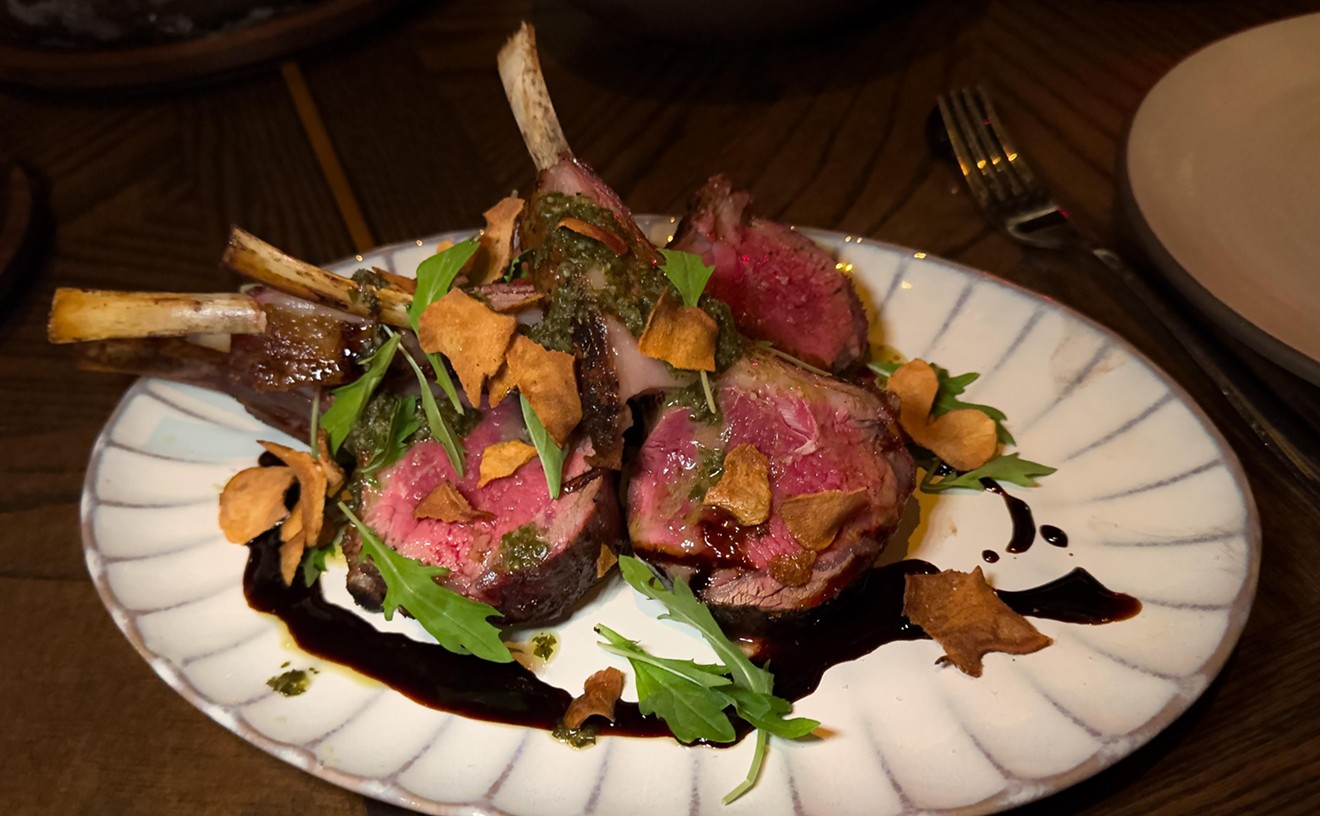Our love for sweets has endured. Despite a wide choice of sweeteners on the market, honey remains popular. It's almost a primal love.
Man's first alcoholic beverage was mead, which is made from fermented honey. That means we have honey to thank for giving man a reason to raise our glasses to toast whatever it is we happen to be celebrating. It seems appropriate to end one millennium, and begin another, with honey, if not with mead.
I started my search for honey worth celebrating with a local beekeeper.
John Walrath has nurtured bees in Phoenix since 1941. He started at age 15. Living at what was then the edge of town, Third Street and Missouri, he made pocket money by selling honey.
Most of us take our honey for granted. It comes in a bear-shaped plastic bottle. Just squeeze. We don't even think about the business relationship between man and bee. Beekeepers provide the little critters with a safe prefabricated home and they pay the rent with sweet liquid currency.
Walrath coaxes honey from his six-legged tenants by providing concierge services tailored to their needs. He winterizes a hive by adding foam insulation, then takes it away in summer. He makes sure that the hive has a young queen who will pretty much "lay her tail off."
How much honey can a beehive make? That depends in part on the expertise of the beekeeper. Walrath gets about 150 pounds per hive per year. As long as he keeps adding "supers" (empty storage frames for the bees to fill with honeycomb and then honey), the bees keep producing.
Walrath can tell by taste the type of flower used to make a given honey. His favorite honey is catclaw. Honey tastes like a plant's nectar, not its fruit. So orange blossom honey doesn't taste the least bit like citrus.
Could I tell the difference? Yes and no. Taste, texture and color can vary significantly. Of course, they're all sweet. Some are like sugar water or corn syrup. Some have a hint of spice. The strongest have a slight bitter finish, like molasses or burned sugar.
Sometimes honey is flavored by herbs or spices. These are flavors added by man.
Honey can be runny or thick, with chunks of honeycomb suspended in the jar. Color runs the spectrum from light gold to amber to deep reddish brown.
Every Saturday, John Walrath sells his honey at the Roadrunner Farmers' Market (35th Street and Cactus). He's very happy to tell you about his honey. And so am I.
My favorite is the Late Spring Chunk Honey ($7 per quart). This dark honey is teeming with chunks of honeycomb. I followed Walrath's suggestion and spread some on warm toast. I'm hooked. The wax softens, as opposed to melting, and the result is a honey with a jamlike consistency. The honey has a strong earthy flavor.
Even more wax-laden is Walrath's Cappings 'n Honey ($9 per quart). With a texture like thick chunky preserves, this opaque treat is loaded with pollen. Bees use wax to seal the top of each hexagon-shaped honeycomb chamber. The beekeeper slices off these "caps" to remove the honey. The caps, and the honey that comes with them, are "cappings." Cappings 'n Honey has a complex flavor, with all the sweetness of the pure stuff.
Walrath's honey in the comb ($4.16 per pound) is like candy. With a strong molasses scent, and crispy-crunchy texture, the comb is unique. It reminded me of the hollow, sugar-water-filled wax lips I enjoyed as a child.
John Walrath also sells plain honey. His Palo Verde-Mesquite is dark, caramel-scented, and very thick. The Early Spring Desert Honey is light gold and has a faint hint of cinnamon flavor. Both are $2.35 per pound.
During my search for nuts for an earlier column, I wound up at Bates Nut Farm, 9605 East Apache Trail in Mesa. When I was there, I saw a shelf with all sorts of honey. That shelf gave me the idea to write about honey in the first place. When I returned to Bates, I counted 11 kinds of honey on that shelf, including orange blossom, mesquite and clover.
Bates sells Killer Bee Brand Catclaw ($2.99 per pound). Since it's Walrath's favorite, and he was out of stock, I bought some. It was thick textured, with a faint hint of perfume and a light flavor.
The Killer Bee Saguaro ($2.99 per pound) was a disappointment. Its flavor dissipates quickly. I expected more from our state flower.
The nut farm had two very intriguing honeys, White Sage ($8.59 for 1 pound 2 ounces) and Clove Basil ($13.25 for 1 pound 2 ounces). Both come beautifully packaged from Barrios Farms in New Mexico. Both were thin textured, a likely result of being overheated during the flavor-infusing process.
The White Sage has a pleasant, mild sage flavor, but it won't take the place of fresh sage in or on your food. The Clove Basil tastes like cloves and honey, but not even a hint of basil. It was pleasant, but not enough to justify its price. I suspect that the high prices are because of the raffia-tied, plastic-embossed jars. Buy plain honey and season food with your own herbs or spices.
I went to Wild Oats Market with high expectations. Its reputation for things wholesome and organic made it a natural choice for honey gathering. Although the selection wasn't impressive, Patagonia Honey, an Arizona-grown brand, intrigued me. The 1 pound, 1 ounce bottles sell for $3.29.
According to the bottles, "Patagonia Honey is produced from bees which are seasonally moved throughout Arizona." Maybe I'm a little gullible, but I like to think that moving the bees to the flowers means that the honey is more likely to be made with the nectar of just one kind of flower.
When I shut my eyes and think of honey, it tastes like Patagonia's Clover Honey. The Patagonia Fairy Duster Wildflower is dark and has a pleasant strong flavor, with a hint of bitter under the sweet finish -- like the sugar crust on crème brûlée.
The Patagonia mesquite was more like thick sugar water than honey. The orange blossom had nice flowery aroma and flavor, but was a little too runny for my taste.
If you don't use your honey in a hurry, you might notice a whitish crust forming in the jar. Don't throw it away.
Honey crystallizes as it ages. Keeping it in the refrigerator speeds up this process. Walrath says that keeping honey in the freezer is the best way to store it for long periods. The extreme cold in the freezer won't promote crystal formation. To remove crystals, put the jar/bottle in a pot of hot water, or set it in the sun on a warm day.
It's traditional to eat apples dipped in honey on Rosh Hashanah (the Jewish New Year). Although Rosh Hashanah is celebrated around Labor Day, I tend to treat all New Year's celebrations the same way. I wish people a happy New Year, and I tell them to stay off the roads.
Honey symbolizes a wish for a sweet year to come. This week's New Year's celebration marks the end of a year, a decade, and a century. I can't think of a better time for a toast -- especially if it's spread with a little honey.
Contact Andy Broder at his online address: [email protected]










